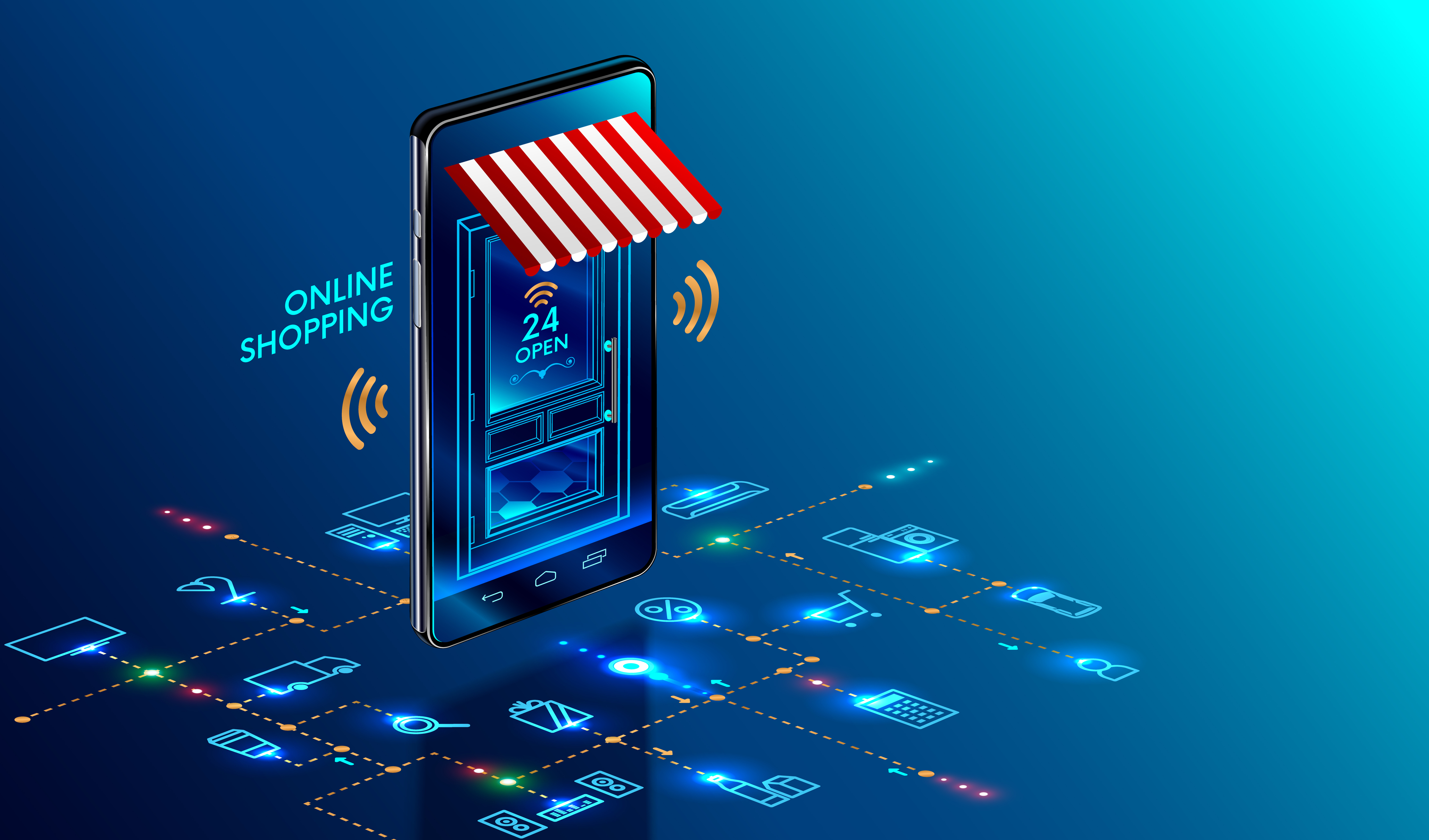
Composable commerce and headless commerce each represent a distinct approach to building and managing online storefronts.
In this post, we'll explore headless vs. composable commerce approaches in-depth to highlight functionalities and their distinct advantages to retailers.
Composable Commerce
Composable commerce allows retailers to design a bespoke e-commerce platform by piecing together distinct components or modules. Each module, specialized in a particular function, can be selected based on the retailer’s unique needs and customer demands.
Notable Qualities of Composable Commerce:
- Modularity: An expansive technology marketplace means retailers can build a platform or tech stack optimized for their unique requirements.
- Flexibility: The ability to replace or upgrade individual technology components means the platform can adapt to evolving business needs and market trends.
- Customization: Retailers can tailor the user experience, operational workflows, and integrations to create a commerce platform that aligns with their brand and strategic goals.
Headless Commerce
On the other hand, Headless commerce is one component of composable commerce.
It refers to an architecture where the front-end presentation layer is decoupled from the back-end commerce functionality.
This separation allows for greater flexibility in content delivery and user experience design, catering to the needs of businesses looking to offer rich, dynamic, and interactive user interfaces.
Key Characteristics of Headless Commerce:
- Front-End Flexibility: Brands can quickly change the user interface without affecting the backend, enabling prompt responses to market trends and customer preferences.
- Omnichannel Consistency: It facilitates a consistent content delivery and transactional experience across various channels (think social media, marketplaces, etc.) and devices, enhancing the customer experience.
- Developer-Friendly: With the separation of concerns, developers can use their preferred technologies and frameworks to build and optimize the front-end experience.
Each approach provides a distinct set of tools and opportunities for retailers to enhance, optimize, and innovate within their e-commerce ecosystems.
The choice between composable and headless commerce often hinges on a retailer’s specific needs, technical capabilities, and the desired level of customization and control over the user experience and backend operations.
Flexibility

The degree to which a commerce platform can be modified and tailored often defines a brand’s competitiveness and relevance.
Explore the nuances of flexibility in composable and headless commerce below, underscoring how each architecture equips businesses to maneuver through the ever-changing retail landscape.
Composable Commerce
Composable commerce provides brands with the tools to create tailored e-commerce solutions.
Its structure is inherently adaptable; companies can select, integrate, and manage a variety of components to fit their specific operational needs and customer engagement strategies.
This approach supports a dynamic adaptation to market trends.
For example, suppose a retailer identifies a need to enhance their payment processing system to include more options or faster transactions. In that case, they can easily integrate a new module to address this need without affecting other platform components.
This granular level of adaptability is crucial for businesses aiming to stay ahead of customer expectations and market trends.
Headless Commerce
The flexibility of headless commerce is most apparent in the presentation and user experience layer.
The architecture's design, where the front end is decoupled from the backend, enables businesses to make rapid, iterative changes to the user interface without impacting the underlying commerce and data processing systems.
This separation benefits retailers aiming to innovate continuously in their customer engagement strategies.
For instance, retailers can quickly implement new design elements, interactive features, or content layouts to respond to emerging customer preferences or seasonal trends.
The backend remains unaffected, ensuring stability and continuity in order processing, inventory management, and other core functions.
TL;DR
Essentially, composable commerce offers broad flexibility, spanning front-end customer engagement and back-end operational components. In contrast, headless commerce enhances front-end presentation and user experience adaptability.
Both models afford retailers distinct avenues to innovate and adapt but in different aspects of the e-commerce ecosystem.
Each business must evaluate where flexibility is most needed to align their choice with strategic priorities.
Integration Capabilities
.jpg?width=4206&height=2366&name=iStock-1327245423%20(2).jpg)
Seamless integration of commerce components is foundational to delivering a fluid and responsive customer experience.
Both composable and headless commerce architectures present distinct approaches to integration, influencing the agility and efficiency of businesses in responding to multifaceted customer needs and market demands.
Composable Commerce
Integration is central to its effectiveness. Ease of module integration is a significant benefit, enabling retailers to construct a highly cohesive and customized e-commerce environment.
Retailers opting for composable commerce can select the best solutions for each aspect of their operations, from inventory management to customer relationship management and beyond.
Each selected component integrates with others, whether from the same vendor or diverse providers. This interoperability maintains data flow across all parts, enhancing real-time decision-making and operational efficiency.
For example, a retailer might choose a specific solution for payment processing and another for inventory management. The composable relationship facilitates effective communication, ensuring inventory levels are updated in real time as sales happen.
Headless Commerce
With its divided front and back ends, headless commerce presents a unique set of integration challenges and opportunities.
On the one hand, the decoupling allows for greater freedom and flexibility in designing and updating the front-end experience. However, ensuring that these front-end innovations integrate effectively with the backend commerce functionalities is crucial.
Businesses using headless commerce need to pay particular attention to the interfaces between the presentation layer and backend processes.
Effective integrations are vital to ensure that changes in the user interface do not impact the efficiency and reliability of order processing, payment transactions, and other backend operations.
Headless commerce is typically referred to as “API-first” because the front and back-end communicate with each other through an API layer. APIs bridge seamless communication between the two divided halves.
In this model, a change in the website's layout or navigation, for instance, must be effectively communicated to the backend systems to ensure consistency in order processing and customer experience.
The focus is on ensuring that the flexibility afforded to the front end does not compromise the integrity and efficiency of backend operations.
TL;DR
Integration capabilities are intrinsic to the effectiveness of both composable and headless commerce.
While composable commerce emphasizes the seamless interconnection of diverse operational modules, headless commerce assures front-end innovations translate into consistent and efficient back-end processes.
The evaluation of integration capabilities should align with three things:
- Operational structure
- Strategic objectives
- The scale of the e-commerce ecosystem
Scalability

The scalability of your commerce architecture is instrumental in ensuring that the expansion doesn’t compromise performance or customer experience.
Composable Commerce
The modular architecture of composable commerce makes it uniquely scalable. Each technology or solution can be scaled individually, allowing retailers to expand or refine specific aspects of their operations without completely overhauling the entire system.
For retailers and brands, this means the ability to adapt to increased demand, expand product lines, or enter new markets with minimal disruption.
For instance, if a retailer decides to integrate with a new marketplace like Amazon or eBay, having a flexible and robust OMS ensures the addition is seamless.
The OMS can swiftly accommodate the new sales channel, managing orders and inventory across all platforms without disrupting existing processes. This provides a smooth transition and continuity in operations, underscoring the adaptability of a well-integrated OMS in a composable commerce environment.
Another vital aspect of scalability in composable commerce is the ease of adding new features or components. If a business identifies an emerging need or opportunity – such as integrating a new payment method, adding a personalized recommendation engine, adding a loyalty program – it can incorporate these with minimal adjustments to the existing infrastructure.
The architecture adapts, allowing businesses to evolve in tandem with market dynamics and customer expectations.
Headless Commerce
Headless commerce also supports scalability but does so from a different angle. Given its separation between the front and back ends, businesses can scale each independently.
For example, a retailer can create highly unique individual channel experiences and even add new selling channels without affecting the backend’s performance. The backend systems dealing with order processing, inventory management, and other core operations remain stable, ensuring continuity and reliability.
TL;DR
While composable commerce offers modular scalability allowing for targeted enhancements and adaptations, headless commerce provides the freedom to scale front-end experiences independently of backend operations.
Both approaches require careful planning and execution to ensure scalability enhancements contribute to overall operational efficiency, customer experience quality, and business agility.
Composable vs Headless: Pros & Cons

Every commerce architecture comes with its unique set of advantages and challenges.
As businesses seek to align their operational needs with the optimal technology stack, understanding the pros and cons of each option is critical.
Pros of Composable Commerce
- Modular Flexibility: Retailers can choose different components to create a customized commerce ecosystem.
- Enhanced Customization: Each module can be tailored to meet specific business needs and goals.
- Scalability: Easy to scale the business operations by adding or upgrading modules.
- Vendor Variety: Retailers are not tied to a single vendor and can choose best-in-class solutions.
Cons of Composable Commerce
- Integration Complexity: Integration can become complex with multiple components from different vendors. It may require external effort and expertise to ensure seamless integration and operation.
- Vendor Management: Managing different vendors and components can be intricate.
- Cost Management: Costs can escalate with the addition of more specialized modules.
Pros of Headless Commerce
- Front-End Flexibility: Allows for independent modification and UI enhancement, enabling quick adaptation to emerging trends and customer preferences.
- Omnichannel Consistency: Facilitates consistent content delivery across multiple channels and devices, enhancing customer experience and engagement.
- Developer Friendliness: Developers can use their preferred tools and languages for front-end development, promoting innovation and efficiency in UX design.
Cons of Headless Commerce
- Integration Concerns: Requires effective integration between the front end and back end. Ensuring seamless communication and data flow can be complex.
- Backend Limitations: The backend remains standardized, potentially limiting holistic customization and restricting adaptability and innovation in certain operational aspects.
- Resource Intensive: Maintaining and optimizing both ends effectively can be resource-intensive. Requires dedicated resources to harness the full benefits.
Deck Commerce Simplifies Order Management in Composable & Headless Commerce
Success in today's dynamic retail environment requires tailored technology strategies.
While composable and headless commerce differ from traditional, monolithic platforms, they present distinct pathways to enhancing flexibility, scalability, and customer experience.
At Deck Commerce, we recognize the critical role of an adaptable Order Management System (OMS) that seamlessly integrates within these dynamic architectures.
We are committed to empowering retailers to harness the strengths of composable and headless commerce, ensuring that as your brand evolves, your technology ecosystem is responsive and a proactive participant in driving innovation, efficiency, and growth.
Get in touch with order management experts to talk about your tech stack and how Deck Commerce OMS can complement your tech stack.
